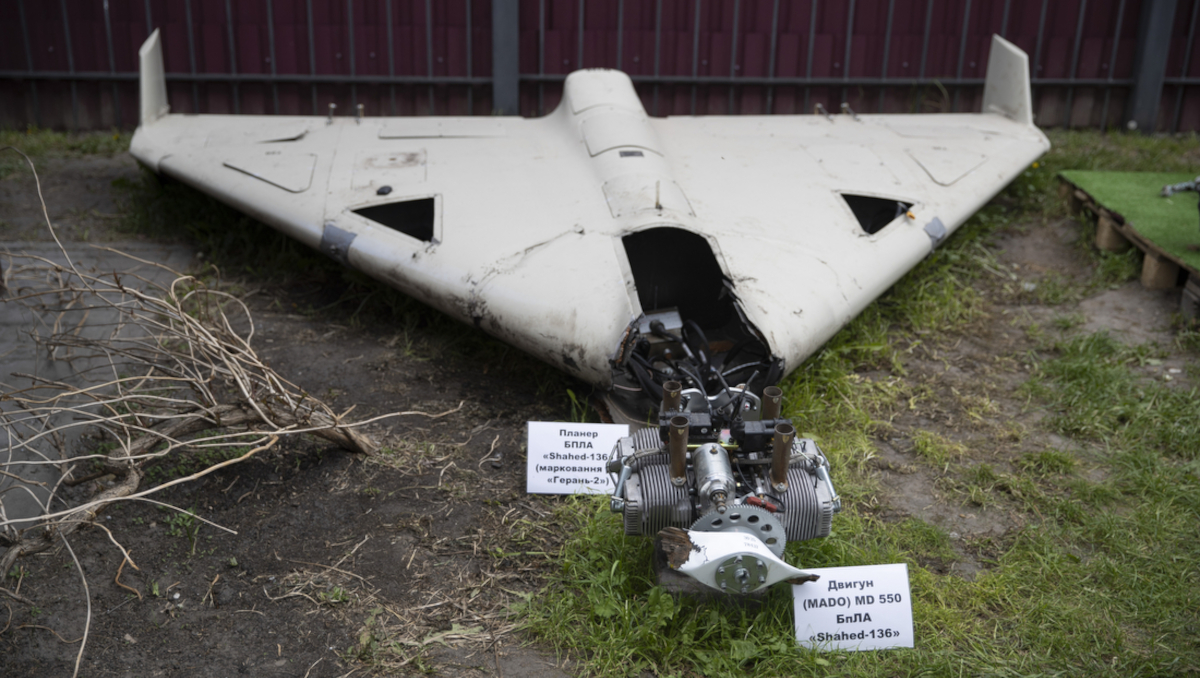
Rather than revolutionizing warfare, unmanned systems have emerged as evolutions within the larger information revolution; advancements to be sure, but failing to render conventional militaries obsolete or dramatically reshaping force structures.
High Tech Hype and the Reality of Unmanned Systems
The proliferation of small unmanned aerial systems (sUAS) supplemented by advancements in artificial intelligence (AI) targeting has fueled claims of an emergent military revolution. Supporters claim that UAS and its AI-enabled next-generation counterpart represent a paradigmatic shift away from traditional warfighting, necessitating force restructuring and significant investment in emerging offensive technologies. As states race to achieve “revolutionary” unmanned capabilities, the Department of Defense (DoD) must take a balanced approach to investing in the high-tech arms race while addressing issues of force readiness and conventional warfighting capabilities, especially in preparing for possible denied, degraded, and disrupted space operational environments (D3SOE). A closer examination of contemporary sUAS use, such as in the Russo-Ukraine War, discredits the claim that unmanned technology is revolutionary and should caution the DoD against “AI-hype.”
sUAS have not fundamentally reshaped warfighting, nor impacted strategic outcomes, despite operators increasingly employing sUAS. Rather than revolutionizing warfare, unmanned systems have emerged as evolutions within the larger information revolution; advancements to be sure, but failing to render conventional militaries obsolete or dramatically reshaping force structures.
As such, sUAS and emerging lethal autonomous weapons systems (LAWS) fail to meet the criteria of revolutionary technology for three reasons: (1) they have not impacted strategic outcomes as expected of revolutionary technology, (2) their offensive capabilities are diminishing as novelty wanes and countermeasures advance, and (3) they remain dependent on human oversight for control. However, these technologies could become truly revolutionary if innovators embrace full autonomy and–perhaps dangerously–deregulate restrictions on autonomy.
The Misapplication of “Revolutionary”
Many professionals misapply the term “revolutionary” in contemporary military and academic discourse, perhaps influenced by private interests, the military-industrial complex, and “tech bros” who benefit from over-hyping experimental technology. Unlike novel affordable sUAS, larger models like the RQ-4 Global Hawk and the MQ-9 Reaper have long been employed by the U.S. military and intelligence community. However, since 2010, the number of countries with military UAS has nearly doubled. Interest has grown beyond nation-states to non-state groups (and the concerned populace of New Jersey) alike as affordable, commercially accessible sUAS become easily weaponized tools of warfighting.
Houthi rebels, contending with limited access to powerful arms, have turned to sUAS to disrupt global shipping and confront the U.S. Navy, forcing it to intercept cheap drones with far costlier munitions. “Frankensteinian” UASs have been used by resistance forces in Myanmar using 3D printers and repurposed Chinese civilian drones to craft lethal mortar-carrying UAS. Early reports even indicate that 150 UAS and Ukrainian first-person view (FPV) drone operators aided Hayat Tahrir al-Sham’s shock success in overthrowing Syrian president Bashar al-Assad.
Despite this proliferation, combatants have implemented UAS as tools of surveillance and as modified indirect fire capabilities that reduce financial cost and logistic restraints rather than revolutionary technologies reshaping warfighting. As further evidenced by their widespread use and innovation in the Russo-Ukraine war, UAS add novel tactical capabilities but fail to influence strategic outcomes.
UAS Have Not Influenced Strategic Outcomes
In the Russo-Ukraine war, decentralized drone units initially appeared to evidence a revolution of force structure, as specialized drone operators acted relatively independently which fostered tactical innovation. However, actions on both sides suggest that potentially revolutionary changes to modern force structures were instead temporary adaptations, necessitated by the speed at which sUAS were deployed on the battlefield. The Russian Ministry of Defense’s announced centralization plans should allow for more control of drone units and increase the number of drone operators who could instead be used as infantry to bolster Moscow’s “meat grinder” assault tactics. Similarly, Kyiv has created the Ukrainian Unmanned Systems Forces (USF).
Ukraine’s increased production and reliance on UAS has not resulted in decisive strategic advantage. Recognizing novel tactical uses, Moscow procured a drone arsenal of its own, diminishing Ukraine’s first-mover advantage. However, Moscow continues to rely on “meat-grinder” assaults supported by penetrating missile strikes–including hypersonics–in which drones offer novel yet low-impact, localized tactical successes.
Realities on the ground do not indicate armed-UAS are revolutionizing warfighting despite the continuous flurry of hype bolstered by footage from armed drones. Rather, UAS are evolving the hider-finder competition between aerial defense and aerial penetration systems. In Ukraine, reportedly most FPV strikes occur after tanks and other armored vehicles have already been immobilized by anti-tank mines or anti-tank missiles, and that only 10-15% of vehicles are destroyed by FPVs. While Kyiv can produce an estimated 4 million drones a year, conventional munitions still dominate its military’s long-range and precision fires.
The use of lethal sUAS by non-state groups, such as in Hamas’s attack on Israel or Houthi attacks in the Red Sea, has not evidenced a return to medievalism, as predicted in literature supporting the “revolutionary” nature of unmanned systems. Instead, it provides evidence of tactical evolutions in efficiency, speed, and range of their more traditional small-arms and indirect fire capabilities but offers no operational or strategic advantage. Simply put, non-state groups are using new technology but applying old tactics.
Diminishing Novelty is Met with Investment in Countermeasures
Militaries’ production of defensive and countering technologies lag because of an “offensive bias,” or first-mover advantage for offensively oriented emerging technologies. This may temporarily make emerging technology seem revolutionary while developers detect vulnerabilities and produce solutions. Private-enterprise-driven hype and the novelty of unmanned systems have distracted from weaknesses, but as the newness fades, military priorities have shifted toward countering UAS as innovators seek to exploit vulnerabilities through kinetic and non-kinetic means.
Two announcements in early December 2024 reflect this shift toward countering UAS: First, that Anduril was partnering with OpenAI to improve counter-UAS systems with AI models, and second, that the DoD was launching the next phase of its Replicator initiative, focusing on a strategy for countering unmanned systems. These announcements emphasize the growing focus of military producers and lucrative high-tech private arms companies, to exploit vulnerabilities in UAS.
A global race for scalable, cost-effective counter-UAS capabilities drove innovations like the British and Ukrainian infrared laser systems, which boast virtually limitless ammunition, handheld electronic jammers, and interceptor “battering-ram” drones. As countering systems improve and become more affordable, sUAS may become less effective. Additionally, as unmanned systems become integrated with autonomous capabilities, cyber vulnerabilities will be exploited with methods such as data poisoning. These methods may not only disrupt the targeting abilities of LAWS but could further diminish the uneasy trust between soldiers and their autonomous partners if targeting mistakes result in civilian or friendly casualties.
On both sides of the conflict, tactical experiences in Ukraine have driven innovation. Reports indicate that Russian forces have attempted to convert standard 5.45mm AK-47 rounds into improvised buckshot by filling cartridges with shrink-wrapped ball bearings to increase the likelihood of striking small UAS, though rarely causing damage. To compensate for radar vulnerabilities, Ukrainian forces have built an early detection network by mounting cellphones and microphones to 6-foot poles. The sensors detect the sound of incoming drones, enabling monitors to pinpoint the direction of potential attacks. This system has enabled Ukrainian anti-aircraft artillery to adequately defend against UAS attacks in the absence of advanced countering technology.
Although Kyiv can produce millions of low-cost drones and reported fully autonomous systems, both the Ukrainian and Russian armies are reaching critical lows in manpower.
UAS Do Not Replace Human Soldiers
For decades, military planners have projected that future wars will be dominated by UAS, ushering a revolution in which technologically elite states, rather than those with the largest armies or those that field the best manned offensive systems, dominate. The Russo-Ukraine War shows that the reality of contemporaneous war has not reached that point and that large stockpiles of UAS do not offset a dwindling military force.
Although Kyiv can produce millions of low-cost drones and reported fully autonomous systems, both the Ukrainian and Russian armies are reaching critical lows in manpower. Unmanned systems have not changed the fact that Russia’s larger military, despite humiliating tactical defeats, could outlast Ukraine in a war of attrition. Therefore, analysts predict both sides will need to discuss terms for peace in 2025, likely leading to a pyrrhic Russian victory in which Moscow keeps claimed territory and keeps Ukraine out of NATO, but suffers economically, potentially leading to political crisis.
Unless militaries adopt full autonomy, UAS will not replace the need for human soldiers. Although sUAS may only require one pilot, larger systems may require teams. In the case of unmanned systems in which humans are actively engaged as remote pilots or act as the final clearance for the use of kinetic effects, this change is not revolutionary. Much like historical evolutionary technologies such as the longbow, repeating rifle, and precision-strike munitions, UAS distance a human combatant from a target. UAS can be thousands of miles from an operator yet still increase the efficiency of employing a down-range a kinetic effect. However, increased range and efficiency alone are not sufficient to warrant a revolution.
Precision fires–whether through laser-guided munitions, UAS, or conventional modern strategic bombing–are unlikely to bring about war termination. Although some claim that airpower doesn’t lose wars, and some conflicts may not require the seizure of territory to achieve strategic goals, domination of the air does not necessarily equate to domination of the ground. Additionally, intra and post-war security and peace operations will continue to rely on humans, rather than UAS, to defend territory, influence populations, and assist in nation-building.
Potential for Revolution: Embracing Full Autonomy
A military technology’s revolutionary impact may not depend on its initial use, but on how innovation adapts it over time. The innovative use of future sUAS will be swarming. Drone swarms will be revolutionary in that opponents who lack the same capabilities will be overwhelmed by speed and numbers. Only states that have swarm capabilities will be able to contend against drone swarms because fully autonomous drone swarms will be too fast for human-controlled UAS or counter-UAS systems. Additionally, autonomous drone swarms will operate independently of human control, eliminating vulnerabilities caused by disrupted lines of communication or operator shortages.
However, the United States is unlikely to be the first innovator to revolutionize sUAS, as the Department of Defense, through directive 3000.09, has pledged to only design LAWS by which commanders and operators can “excercise appropriate levels of human judgment over the use of force. Adversarial states or non-state actors which challenge the international rules based order, and may lack the military capabilities to contest powerful nations otherwise, may be more likely to pursue the advantages of this innovation first.
However, justifiable concerns regarding LAWS posed by analysts within the international security and human rights communities influence self-regulating policies such as directive 3000.09. While LAWS could theoretically reduce civilian casualties, contemporary AI-enabled image recognition systems used in targeting exhibit racial and gender bias. Additionally, non-state groups and malicious states could employ the same technology to oppress targeted groups discriminately and target known adversaries.
However, the argument to stop killer robots overlooks the reality that malicious actors ignore international regulations and respond to realist means of deterrence. This situation could result in a security dilemma in which malicious actors would benefit from international regulation of LAWS. Over time, security-minded states such as the United States may forgo such self-limiting regulations in favor of pursuing lethal autonomy as a deterrent and countering mechanism to these malicious actors who seek to disrupt global norms. In a race to wield fully autonomous systems first, innovators may tap into the revolutionary potential of LAWS–creating systems devoid of human deficiencies and free from the constraining logistic realities of the military human workforce. Unless the DoD shifts its stance on lethal autonomy, it may be over-investing in experimental emerging technology which has been hyped by the private interests of a tech-industrial complex which promise high-tech answers to the questions of future warfare, but which has yet to prove it can impact strategic outcomes. Instead, DoD investment may be better focused on evolutionary goals like force readiness, maintenance, munition production, and low-cost scalable countering capabilities to better prepare for future large-scale combat operations within possible D3SOE. In shifting toward lethal autonomy, the U.S. military could increase UAS lethality and move UAS innovation toward the revolutionary while offsetting the expense of costlier, limited, munitions and allaying potential numeric disadvantages against larger adversarial militaries.
Layton Mandle is a Postdoctoral Fellow in Emerging Technology and Artificial Intelligence at the United States Army War College.
The views expressed in this presentation are those of the speakers and do not necessarily reflect those of the U.S. Army War College, U.S. Army, or Department of Defense.
Photo Description: Remains of Russian missiles and drones, launched into Ukraine, in Kyiv Scientific Research Institute of Forensic Expertise. Iran-made kamikaze drone Shahed 136.
Photo Credit: Kyiv City State Administration




